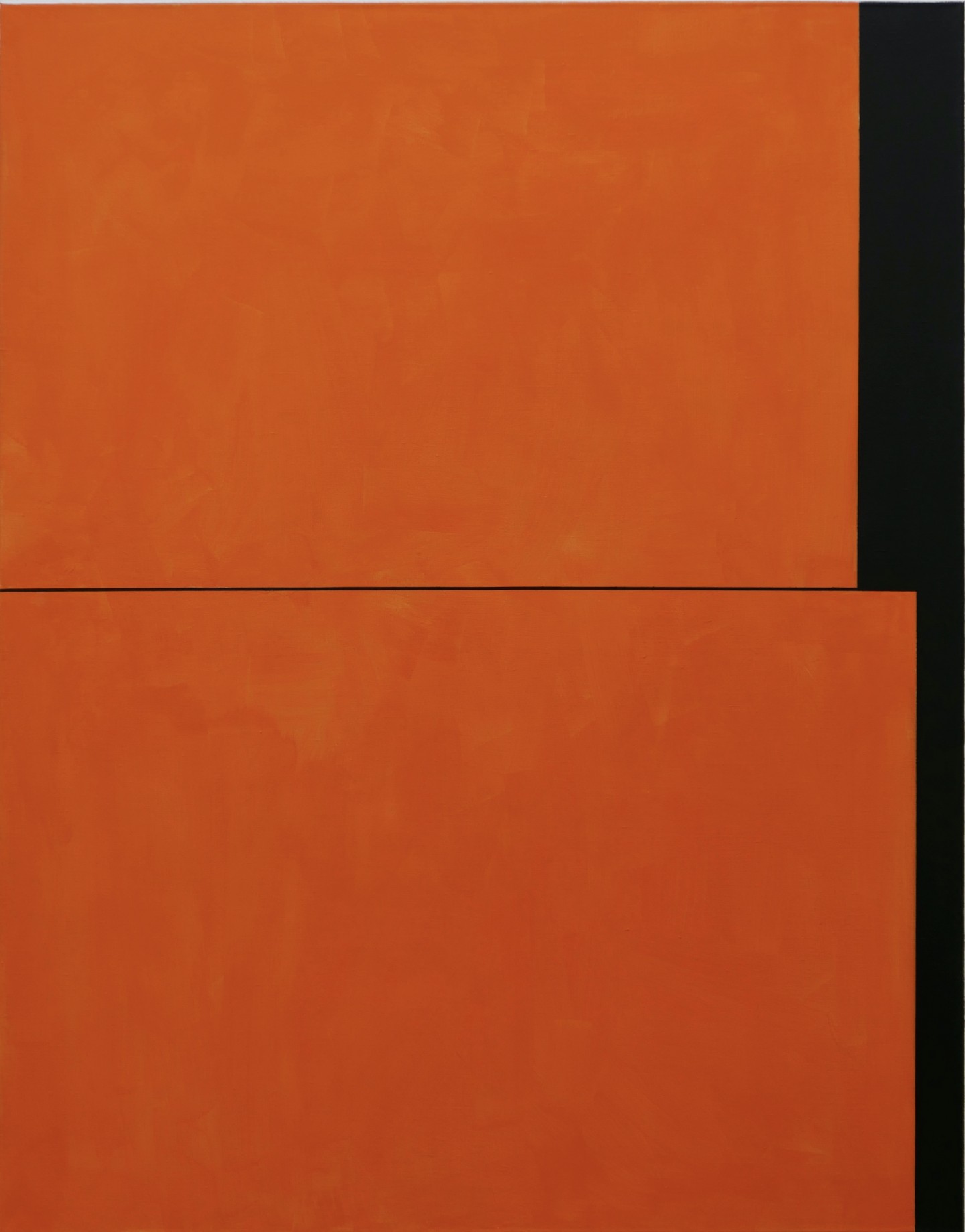Verschuiving
115 x 90 cm
Acrylic on linen
A Composed Silence
Paul Corvers (‘s-Hertogenbosch, 1953) attended the Academie voor Beeldende Kunsten St. Joost (the Academy of Fine Arts St. Joost) in Breda in the early eighties. He started his education in 1977, the year in which the Neue Wilden, a neo-expressionist movement in Germany, was founded. Corvers sees himself as a painter, so his initial fascination for this movement and for American abstract expressionism is not peculiar. However, the echo of Piet Mondrian's modernism sounded louder and louder over the years. The large gesture of painting and the complex, pasty application of colour silenced. During many years the horizon and, by extension, the landscape provided guidance to the viewer when looking at his abstract compositions.
In his more recent work Paul Corvers composes paintings. Many areas of colour, large and small, alternate with a frivolous woolly brushstroke. At first sight painted in a hermetic and difficult painting language that suggests a clear and well-considered plan. The landscape forms the starting point, I read here and there. Often there is indeed a horizon in the works of Paul Corvers, but I wonder if there is nothing more going on. Looking at the works, they make me mainly think of the two principles of the well-known American avant-garde composer John Cage (Los Angeles 1912-1992 New York): chance and indeterminacy. Inspired by Zen Buddhism, Cage began to compose music that is about the pure experience of sound as sound, without further emotional expression or coherent structure.
In the recent works of Paul Corvers, the figurative tools are increasingly being abandoned in order to arrive at pure, abstract compositions, built up of clear areas of colour determined by chance and indeterminacy. At the time Piet Mondriaan composed his compositions intuitively but harmoniously. We also recognize this in the work of Corvers. Whereas the Neue Wilden presented themselves to us as highly expressive painters averse to dogmas and working in total freedom, Corvers reaches this stage with completely different work. The adventure of painting is in the minimum. In this way, the areas of colour that appear on the canvas only refer to themselves. They are completely at rest and entirely at peace with each other. It results in works that represent a welcome silence. The small formats of most of the works unravel an unprecedented grandeur. It is in line with what John Cage once said: 'There is no such thing as an empty space or an empty time. There is always something to see, something to hear. In fact, if we're trying to produce silence, we cannot.’ In the art of Paul Corvers working in great freedom also results in a void rich in images and sounds. A composed silence.
Hans November
Breda, 20 July 2020
